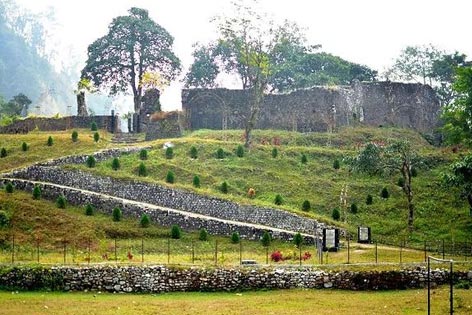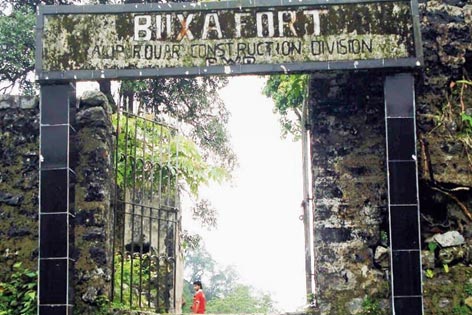A Drive to Buxa Fort from Jaldapara National Park
Updated- 13/July/23 The Buxa Fort is known for being one of the oldest citadels in Eastern India. Gleaming with its cultural heritage the Buxa Fort is a favourite tourism destination in the Jalpaiguri district of West Bengal. The architecture is a major attraction inside the Buxa Tiger Reserve at an altitude of about 2844 feet above sea level. The tropical rainforest surrounding the Buxa Fort serves as an international corridor for elephants migrating to Bhutan from India. The nearest railway station to reach Buxa Fort is Alipur Duar Junction, at a distance of about 30 km. The fort is also a popular destination for history lovers.


Wildlife enthusiasts visiting the Buxa Tiger Reserve definitely pay a visit to Buxa Fort. The location of the fort is a trekker’s paradise as it is the starting point of trekking routes to Lepchakha, Jayanti Village and Rupam Valley near the Bhutan border. A combined tour of Jaldapara National Park, Buxa Tiger Reserve and Buxa Fort will be an astounding experience. Do not forget to encompass the Buxa Tiger Reserve and a trek from Buxa Fort while conducting the Jaldapara Tour Package Booking.
The historical significance of Buxa Fort
A mystery is involved with the history of the construction of the Buxa Fort, which persists to date. Some believe that the fort was constructed by the Tibetan Emperor Tsong-Sin-Gyampo in the second half of the 7th Century during the Tibetan invasion in North-east India. However, it is also said that the Buxa Fort was built by King Sangkalp, the first ruler of the Kamptapur Dynasty to prevent the Tibetan invasion. The possession of the fort was under the Koch Kingdom for quite a long time until the Bhutanese took charge of it. The Silk Route was strictly invigilated by the Bhutanese Army and linked India and Tibet through Bhutan.
After the Treaty of Sinchula in 1865, the ownership of the fort was transferred to the British Army. After that, the fort became a place of tyranny and torture to the Indian freedom fighters by the British. The fort was transformed into a highly guarded prison house to captivate the freedom fighters. They demolished the previously built bamboo and wooden structure and rebuilt the fort with stones. Once the magnificent structure was turned into a prison house with small cells without any basic facilities, with brutality at its peak. It was considered the cruelest place right after the Cellular Jail in Andaman. The place was abandoned post-independence.
The prisoners of the Buxa Fort were believed to have written a letter to Rabindranath Tagore while he was at Darjeeling. On 2nd June 1939, Tagore wrote back to them and the content of the letter is still engraved outside the Buxa Fort. In 1959, the Tibetan monks took refuge in the Buxa Fort after the Chinese invasion of Tibet. In 1971, the monks migrated from the Buxa Fort to Mungod and Bykakuppe in Karnataka.
On your trek to Buxa Fort from Santalbari, you can tread to a village nearby the fort. There are few homestays in the village, where you can opt to stay. Or, you can trek back to Santalbari. This trek route too has a historical background, as it is believed that the Bhutanese village dwellers carried baskets full of oranges through this path. Therefore it has been named Santalbari, where Santal or Santra means orange.